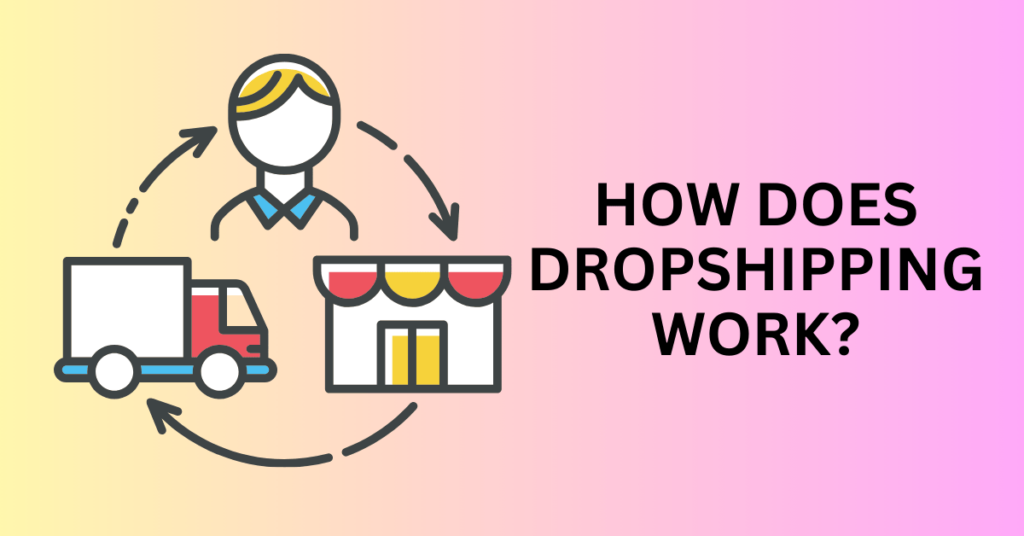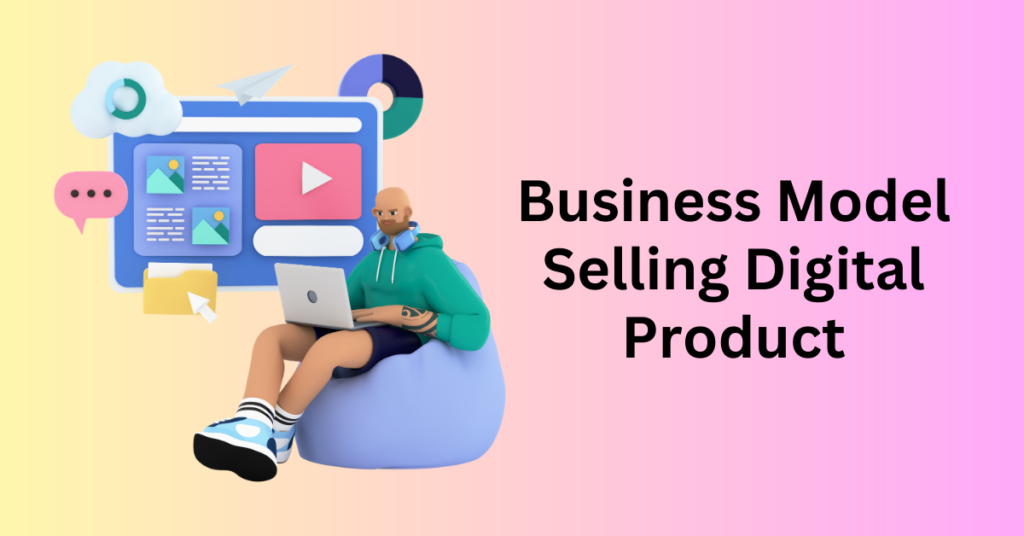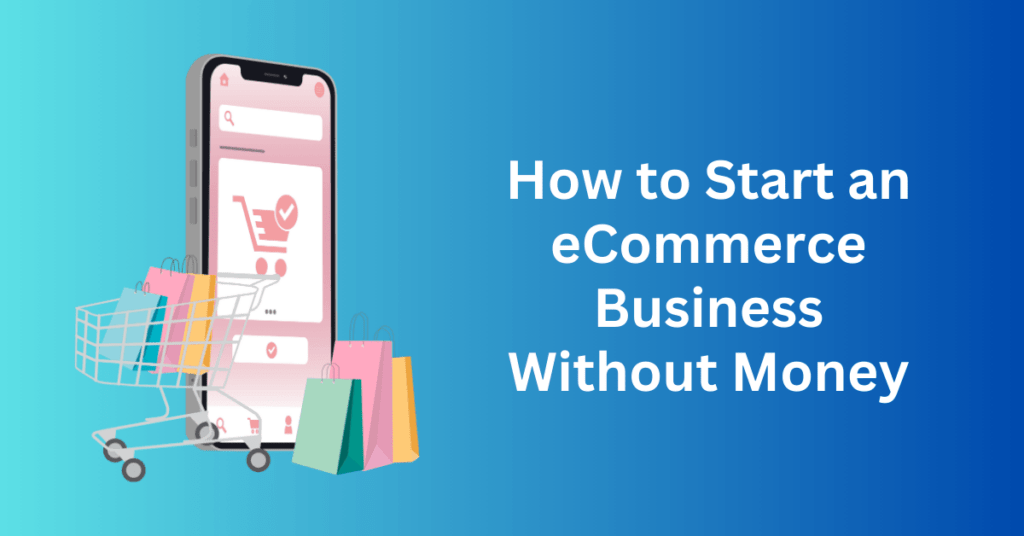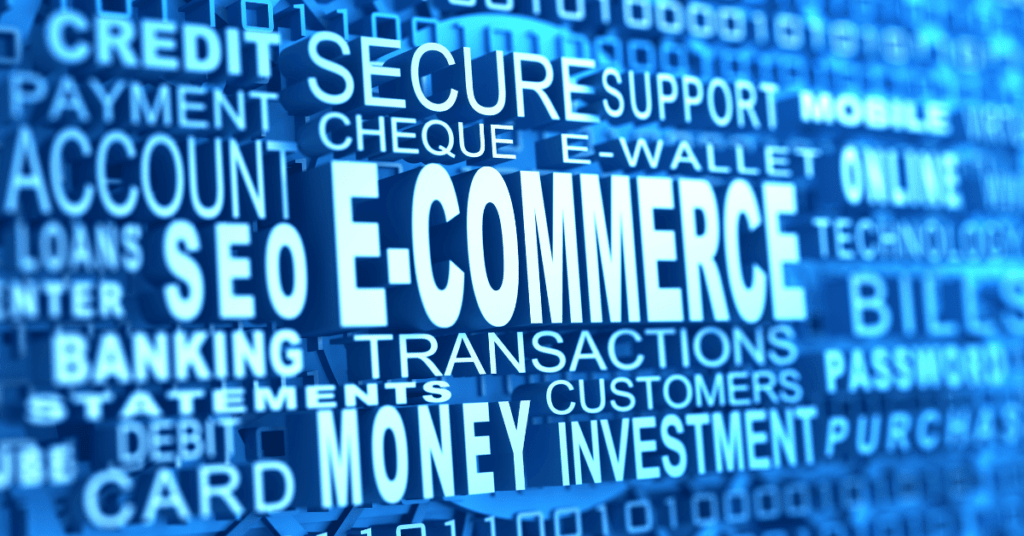Embark on the journey of launching an eCommerce business right from the comfort of your home, even if you’re starting with no money. Opportunities abound for individuals of all skill sets and experience levels.
The key lies in knowing where to discover them. This blog will explain in detail the essential steps for starting an eCommerce Business without any initial investment. From selecting a suitable eCommerce Business model and niche to establishing a compelling brand and implementing effective marketing strategies, we’ve got you covered on the path to entrepreneurial success.
Step 1: Select a Business Model – How to Start an eCommerce Business
Choosing the right model is easier if you thoroughly understand the strengths and weaknesses of each one. So, we’ve provided a quick overview.
Print on Demand
Print on Demand (POD) is an eCommerce Business model that has gained significant traction in the e-commerce industry. Besides, it offers you a low-risk way to start and run your own business. This innovative approach will allow individuals to create and sell custom-designed products without the need for large upfront investments or inventory management.

Here’s a closer look at the advantages and disadvantages of the Print on Demand business model:
Advantages of Print on Demand:
- Low Initial Investment: Firstly, one of the primary advantages of POD is the minimal upfront costs. Traditional retail models often require substantial investments in inventory, storage, and fulfilment. With POD, products are only manufactured when an order is placed, reducing the financial risk for you.
- Risk Mitigation: Then, the on-demand production model eliminates the risk of overstocking or unsold inventory. This also allows you to test different designs and product ideas without worrying about excess stock that might not sell.
- Product Diversification: POD offers a wide range of customizable products, including apparel, accessories, home décor, and more. This allows then you to cater to diverse markets and continually expand your product offerings without the burden of managing physical inventory.
- Global Reach: With POD, you can reach a global audience without the complexities of international shipping and warehousing. Many POD providers handle production and fulfilment worldwide. This will then enable you to tap into international markets seamlessly.
- Time Efficiency: The on-demand production process is efficient, with quick turnaround times. This ensures that customers receive their orders promptly. This can lead to higher satisfaction and potentially repeat business.
Disadvantages of Print on Demand:
- Lower Profit Margins: While the low upfront costs are advantageous, the per-unit costs of POD products can be higher compared to bulk manufacturing. This can result in lower profit margins for you. This is especially important for products with lower selling prices.
- Limited Quality Control: You have limited control over the production and printing process. This can sometimes lead to variations in product quality, colour accuracy, or other issues that may affect customer satisfaction.
- Dependency on POD Partners: You are relying on your POD providers for production, fulfilment, and shipping. Any issues with the POD provider, such as delays or mistakes, can impact your reputation.
- Competitive Market: The ease of entry into the POD market means that it can become highly competitive. To stand out, you need to invest in effective marketing, unique designs, and excellent customer service.
- Limited Customization Options: While POD offers a range of products, the customization options might be limited compared to traditional manufacturing methods. This limitation could restrict the creativity and uniqueness of certain products.
Affiliate Marketing
Affiliate marketing is a performance-based eCommerce Business model where businesses reward individuals or entities (affiliates) for driving traffic or sales to the merchant’s website through the affiliate’s marketing efforts. This mutually beneficial arrangement has become a cornerstone of online commerce, offering advantages and presenting challenges for both merchants and affiliates.

Advantages of Affiliate Marketing:
- Cost-Effective: For merchants, affiliate marketing is cost-effective since they only pay for actual sales or leads generated. This performance-based model reduces the risk of advertising expenses without guaranteed returns.
- Wide Reach: Affiliates can reach a broader audience through their various marketing channels, including blogs, social media, email newsletters, and websites. This diverse reach also helps merchants tap into markets they might not reach through traditional advertising.
- Low Entry Barriers: Becoming an affiliate marketer typically requires minimal upfront investment. Hence, this makes it an attractive option for individuals or small businesses looking to monetize their online presence without the need for product creation or inventory management.
- Passive Income Potential: Successful affiliates can generate passive income streams as they continue to earn commissions on sales generated through their referral links over time. This aspect makes affiliate marketing an appealing option for those seeking financial independence and scalability.
- Performance Tracking: Advanced tracking and analytics tools allow merchants and affiliates to monitor the performance of their campaigns in real-time. This data-driven approach enables both parties to optimize strategies and improve overall efficiency.
- Diversification of Income Streams: For affiliates, partnering with multiple merchants allows them to diversify their income streams. This reduces reliance on a single product or niche, providing a level of financial stability.
Disadvantages of Affiliate Marketing:
- Dependency on Merchant’s Success: Affiliates are dependent on the merchant’s ability to deliver quality products, effective sales funnels, and reliable customer service. If the merchant fails on any of these fronts, it can adversely affect the affiliate’s reputation and earnings.
- Competition: The low entry barriers contribute to high competition in the affiliate marketing space. Standing out requires affiliates to employ effective marketing strategies, build a solid online presence, and create compelling content.
- Fluctuating Income: Affiliate income can be inconsistent, especially for those who are just starting. In fact, success in affiliate marketing often requires time, effort, and the ability to adapt to changing market trends.
- Reliance on Affiliate Networks: Many affiliates work through affiliate networks, which act as intermediaries between merchants and affiliates. While these networks provide various benefits, affiliates may face challenges if the network experiences issues or changes its policies.
Dropshipping
Dropshipping is an e-commerce business model where a store doesn’t hold the products it sells in stock. Instead, when a product is sold, the store purchases the item from a third party and has it shipped directly to the customer. This model has gained popularity due to its low barrier to entry and simplified logistics.

Here are the advantages and disadvantages of the dropshipping business model:
Advantages of Dropshipping:
- Low Initial Investment: Dropshipping requires minimal upfront investment as there is no need to purchase and store inventory. This makes it an attractive option for entrepreneurs with limited capital.
- Low Risk: Since there is no pre-purchase of inventory, the risk associated with unsold stock or dead inventory is virtually eliminated. You only purchase products when you have already made a sale.
- Easy to Start: Setting up a dropshipping business is relatively quick and straightforward. After all, online platforms and tools make it easy for you to launch an e-commerce store without the need for extensive technical skills.
- Product Variety: Dropshipping allows you to offer a wide range of products without the burden of managing physical inventory. This flexibility enables you to test different niches and adapt your product offerings based on market trends.
- Location Independence: The dropshipping model is conducive to remote work and location independence. You can manage your business from anywhere with an internet connection. This makes it an appealing option for digital nomads.
- Focus on Marketing and Sales: With the logistics and inventory management outsourced to suppliers, you can concentrate on marketing, customer acquisition, and building your brand. This can be especially beneficial for those with strong marketing skills.
Disadvantages of Dropshipping:
- Lower Profit Margins: Dropshipping businesses often operate on thinner profit margins compared to traditional retail models. The difference between the wholesale and retail prices, along with additional expenses, can impact overall profitability.
- Dependence on Suppliers: The success of a dropshipping business is heavily reliant on the reliability and efficiency of suppliers. Issues such as stockouts, shipping delays, or product quality problems can adversely affect the customer experience and harm the business’s reputation.
- Increased Competition: The ease of entry into the dropshipping market has led to increased competition. Consequently, with numerous businesses offering similar products from the same pool of suppliers, standing out and building a unique brand can be challenging.
- Quality Control Challenges: Entrepreneurs have little control over the quality of the products they sell. If a supplier provides subpar products, it can lead to customer dissatisfaction and returns.
Selling Digital Products or Services
The business model of selling digital products or services has emerged as a prominent avenue in the digital age. It allows you to create, market, and distribute intangible goods or services. This model leverages the convenience of the online marketplace and has become popular across various industries.

Here are the advantages and disadvantages of the business model focused on selling digital products or services:
Advantages of Selling Digital Products or Services:
- Higher Profit Margin: Creating digital products or services often involves minimal production costs once the initial development is complete. This allows for higher profit margins compared to physical products.
- Scalability: Digital products can be easily replicated and distributed to an unlimited number of customers without incurring additional production costs. This scalability then makes it possible to reach a global audience with minimal effort.
- Instant Delivery: Digital products and services can be delivered instantly to customers. It can offer immediate access upon purchase. This instant gratification can also enhance the customer experience and satisfaction.
- Automated Processes: Many aspects of the selling process, including payment processing and delivery, can be automated. This automation then reduces the need for manual intervention and allows you to focus on other aspects of your business.
- Global Reach: Selling digital products or services allows businesses to transcend geographical boundaries. With the power of the internet, you can reach customers worldwide and then, expand your market reach without the challenges of international shipping.
- Flexibility in Pricing Models: Entrepreneurs can experiment with various pricing models, such as one-time purchases, subscriptions, or tiered pricing. This flexibility enables businesses to cater to different customer preferences and maximize revenue streams.
Disadvantages of Selling Digital Products or Services:
- Piracy and Unauthorized Distribution: Digital products are susceptible to piracy and unauthorized distribution. You may face challenges in protecting your intellectual property, potentially leading to revenue loss.
- Intense Competition: The digital marketplace is often saturated with competition. Standing out requires a combination of unique offerings, effective marketing strategies, and a strong brand presence.
- Customer Education: Depending on the nature of the digital product or service, customers may require education on how to use or derive value from it. You need to invest in clear documentation, tutorials, or customer support to address potential user challenges.
- Dependence on Platform Policies: Businesses selling digital products or services through online platforms are subject to the policies and changes implemented by those platforms. Sudden policy changes or algorithm updates can impact visibility and revenue.
Step 2: Pick a Niche – How to Start an eCommerce Business
A niche refers to a specialized market segment tailored for a distinct audience. Therefore, by selecting the right niche, you can capture the attention of a specific group with unique identities and preferences, thereby minimizing competition.

To identify potential niches, you may utilize market research tools such as Semrush or Buzzsumo to analyze search trends and current interests. Popular POD (Print-on-demand) niches include areas like Animals and Pets, Memes, Health and Fitness and others.
Optimal results are often achieved by narrowing down the niche even further. For instance, instead of offering clothing for generic dog owners, consider refining your focus to target specific demographics like Shiba Inu moms or Labrador Retriever dads. The narrower the niche, the more effective your engagement with the audience.
Step 3: Establish a Brand – How to Start an eCommerce Business
Building a compelling brand identity that resonates with your audience, distinguishes you from competitors, and cultivates a dedicated customer base.
Firstly, you need to craft an original and memorable business name that encapsulates your offerings. You may use resources like Shopify’s business name generator for inspiration.
Next, delve into the following considerations:
- Values: Clearly define your brand’s values. Your potential customers will be more likely to buy from you when your brand’s value aligns with theirs. Besides, you may define what your brand stands for and communicate shared principles.
- Vision: Move beyond mere profitability. You need to outline your brand’s mission. You can then consider the positive impact you aspire to create in the world. Besides, you need to also establish a meaningful connection with your audience by conveying your vision.
- Voice: Develop a communication style that mirrors your brand’s personality and resonates with your audience. This consistency fosters trust and connection.
- Visuals: Formulate a cohesive visual identity that mirrors your brand’s values. Leverage design software like Canva or Adobe Express to craft a distinctive logo, icons, and illustrations.
By addressing these elements, you lay the foundation for a brand that not only stands out but also establishes enduring connections with your target audience.
Step 4: Select a Sales Channel – How to Start an eCommerce Business
Selling online has become an integral part of modern business, and there are various platforms to choose from, each with its own set of advantages and disadvantages. In short, two primary options for online selling are establishing an e-commerce store or leveraging online marketplaces. Let’s compare these two approaches:
E-Commerce Store:
| Pros | Cons |
| Branding and Customization: With your own e-commerce store, you have complete control over the branding, design, and user experience. This allows you to create a unique and consistent brand image. | Higher Initial Costs: Setting up and maintaining an e-commerce store may involve higher initial costs for website development, hosting, and ongoing maintenance. |
| Flexibility: You have the flexibility to set your own policies, control pricing, and manage inventory according to your preferences. You can also customize the website features to cater to your specific needs. | Marketing and Traffic: Generating traffic to your website requires significant effort and investment in marketing. Building brand awareness and driving traffic may take time. |
| Customer Relationships: Direct interaction with customers enables you to build stronger relationships. You can collect customer data, implement loyalty programs, and provide personalized experiences. | Technical Expertise: Managing an e-commerce store may require technical expertise or the assistance of professionals, particularly for troubleshooting and updates. |
| Long-Term Growth: Over time, an e-commerce store can help establish your brand as an authority in your niche, contributing to long-term growth and customer trust. |
A few examples:
- Shopify
- Squarespace
- Wix
- WooCommerce
- BigCommerce
Start Selling with Shopify Free Trial
Online Marketplaces:
| Pros | Cons |
| Built-In Traffic: Marketplaces like Amazon, eBay, and Etsy already attract millions of visitors daily. Leveraging these platforms provides instant access to a large customer base. | Fees and Commissions: Marketplaces charge fees and commissions on each sale, which can eat into profit margins. These fees can vary and may include listing fees, transaction fees, and subscription fees. |
| Lower Initial Investment: Compared to an e-commerce store, the initial investment to start selling on a marketplace is often lower. This is beneficial for small businesses or individuals with limited resources. | Limited Branding: While you can customize your storefront to some extent on a marketplace, it won’t be as extensive as having your own e-commerce store. Your brand may be overshadowed by the marketplace’s branding. |
| Simplified Setup: Marketplaces usually offer a simplified setup process, allowing sellers to start listing products quickly without the need for extensive technical knowledge. | Policy Restrictions: Marketplaces often have strict policies regarding product listings, shipping, and customer interactions, limiting your control over certain aspects of your business. |
| Trust and Credibility: Being associated with well-known marketplaces can instil trust and credibility among customers who are familiar with these platforms. |
A few examples:
Choosing between an e-commerce store and an online marketplace depends on your specific business goals, resources, and preferences. An e-commerce store offers more control over branding and customer relationships but requires a higher initial investment.
On the other hand, online marketplaces provide a ready-made platform with a built-in audience, but you may sacrifice some control and incur additional fees. Some businesses even choose to use both approaches simultaneously, combining the benefits of both strategies. Ultimately, the best choice depends on your unique business model and long-term objectives.
Step 5: Market Your Business – How to Start an eCommerce Business
When embarking on the journey of launching an eCommerce business without a budget, it’s crucial to explore cost-effective marketing options to enhance brand visibility, attract new customers, and boost profitability.
You may consider the following budget-friendly strategies:
- Social Media Marketing: Leverage the power of social media to connect with a broad audience. You should create valuable content, organize engaging contests, and share high-quality product images consistently to generate interest and interaction.
- Email Marketing: A cost-effective strategy, email marketing can be utilized to encourage visitor subscriptions for exclusive offers or discounts. You can set up different automated email sequences to engage and nurture your audiences. Besides, platforms like Canva offer free templates to craft visually appealing emails.
- Content Marketing: Showcase your brand and expertise by producing informative content. This could also include a guide on t-shirt fabrics or an in-depth product review. By providing valuable information, you attract and engage your target audience.
- Guerrilla Marketing: Embrace unconventional advertising methods to make a memorable impact. Consider organizing a fun trivia event in a park or launching a creative social media campaign that involves user-generated content. These unique approaches can capture attention without a significant financial investment.
By implementing these wallet-friendly marketing approaches, you can effectively promote your eCommerce business, even when operating on a shoestring budget.
Step 6: Invest in Growth – How to Start an eCommerce Business
As your business becomes profitable, consider employing these strategies to accelerate growth:
- Paid Marketing: Expand your reach and boost sales by investing in paid marketing through platforms like Facebook, Instagram, or TikTok. You can then utilize targeted ads to connect with a broader audience and increase brand visibility.
- Enhance Store Features: Explore additional features for your eCommerce store, especially if you are using a platform with an app store. These tools can streamline operations, save time, and enhance the overall shopping experience for your customers.
- Email Marketing Tools: Invest in email marketing tools such as GetResponse, or MailChimp to automate your email workflows. These tools enable you to create and manage effective email campaigns, fostering better communication with your audience and potentially increasing customer retention.
By incorporating these methods, you can expedite the success of your eCommerce Business, reach new audiences, optimise your store’s functionality, and establish more efficient communication channels with your customers.
How to Start a Print on Demand Store Now With Minimal Cost
If you have decided to start your eCommerce store without inventory, storage and logistics, follow us.
Now, we will be sharing the step-by-step guide on everything you need to start an eCommerce Business with little to no money today.
1. Research and Niche Selection:
Firstly, begin by thoroughly researching market trends and identifying a niche that aligns with both your interests and potential customer demand. You may use tools like Google Trends and social media platforms to gain insights into trending topics and identify a profitable niche for your Print on Demand (POD) store.
2. Sign Up with Printify:
Then, visit the Printify website and sign up for free an account. You can connect your Printify account seamlessly with your chosen eCommerce platform. Printify offers different seamless integration for different popular marketplace and eCommerce platforms. When the integration is established, you can then publish your products directly from Printify to your store. And when orders come in, they will be sent to Printify for fulfilment.
Start Your Print-On-Demand Business with Printify
3. Set Up an eCommerce Platform:
Next, you need to decide where to sell. You should choose a cost-effective eCommerce platform that suits your needs, such as Shopify, WooCommerce, or Etsy.
If you are using the marketplace, you will need to follow its rules. With an eCommerce platform like Shopify and WooCommerce, you will have more control of your store design and overall sales process.
No matter which you choose, follow the platform-specific instructions to create an account and set up your online store. You need to also ensure that it aligns with your brand and showcases your products effectively.
4. Optimize and Launch Your Store:
If you are building your eCommerce store, you need to customize the layout and design to align with your brand identity. Also, creating different important pages like About Us, Contact Us, FAQs and policy page. These are important for your customers to get the information or help they need instantly.
And if you are using a marketplace like Etsy, you just follow its storefront design and add your content. There are limited changes you can make to that.
Before launching your eCommerce store, you need to double-check all settings and configurations on your eCommerce platform. This is to ensure that everything is in place. The links and buttons are working perfectly including your checkout and payment process.
5. Design Your Products:
You can use graphic design tools like Canva or Printify’s design tool to create visually appealing and unique designs for your products. Before exporting your design, you need to make sure that your design is high quality and follows the dimensioning requirements for each product. Different products will have different dimension requirements, so make sure to follow your platform’s guide.
6. Choose Products and Suppliers:
Now, it’s time to upload your design to Printify to create your product. There are plenty of products offered by Printify. This includes apparel, accessories, and home goods. Printify works with different suppliers worldwide to provide the products. Hence, you must select suppliers based on pricing, product quality, and shipping times. This careful consideration ensures you offer diverse and high-quality products to your customers.
After you create the product, you need to fill in the product information like the product title, description and variations. In addition, you will need to calculate your costs and margin. This will include your product, printing, and shipping expenses, and set competitive yet profitable pricing for your products.
When pricing your product, you must strike a balance that attracts customers while ensuring your eCommerce Business remains financially viable.
7. Market Your Store:
You can now drive traffic to your store. You can leverage low-cost marketing channels, especially social media, to promote your products and drive traffic. With Printify’s mockup generator, you can create visually appealing product images that catch the attention of your target audience.
But of course, you should always take your own product photos or videos to show your product to your customers effectively. This will be your unique product image that does not look like something mockup.
8. Monitor and Optimize:
You need to monitor your store’s performance regularly and test different parameters to optimize your product and store for higher conversion. By split testing, you can know which combinations work best to get more sales.
Closing Thoughts – How to Start an eCommerce Business Without Money in 2025
As we conclude our guide on initiating an eCommerce business without upfront capital, we trust that you’ve gained the inspiration needed to embark on your journey toward entrepreneurial success. With numerous online money-making avenues available, it’s crucial to invest time in discovering the one that aligns with your skills, strengths, and goals.
Prioritize a thoughtful evaluation of your abilities and aspirations before making a decision, ensuring the chosen path resonates with your unique qualities and sets the stage for a successful online venture.


